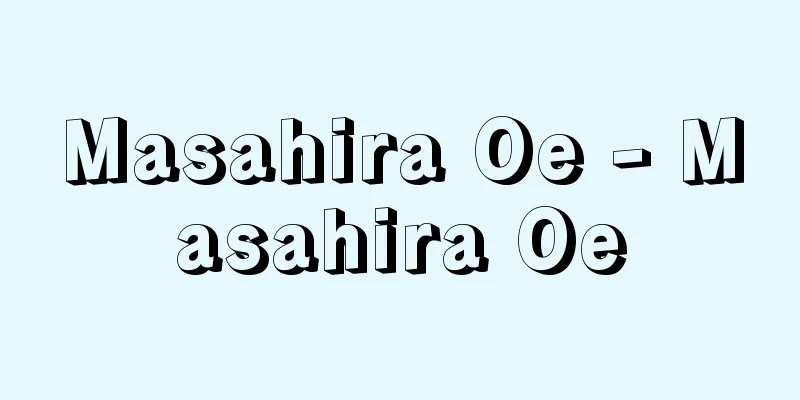Kagura Song - Kagura Uta

|
Kagura and folk songs are sung during Kagura performances. There are Kagura songs from Imperial Court Mikagura and Kagura songs from folk Kagura. Of all the Kagura songs that still exist, the ones from Imperial Court are the oldest, and ancient copies of these songs include the Kagura Wagon Hifu, said to have been written by Fujiwara no Michinaga, as well as the Nobuyoshi version, the Nabeshima family version, and the Shigetane version, all from the Heian period. Kagura songs generally refer to the songs performed during the Kagura court Mikagura. The Mikagura songs from the Naishidokoro can be broadly divided into Torimono songs and folk songs. There are 30 songs about nine categories of harvesting items: sakaki (branch of a tree), mitengura (offering of offerings), tsue (stick), sasa (reeds), bow, sword, hoko (spear), hisago (ladle), and kazura (kudzu). They are songs praising the harvesting items or songs related to the harvesting items. In addition, two songs about Karakami (Chinese gods) are also included. The folk songs sung after the intermission incorporate folk songs from the time when Mikagura was first established, and include the O-saibari (Miyabito, Naniwagata, Yuushide, Maebari, Shinagatori, Inano, and Wagimoko), Ko-maebari (Komokura, Shizuya, Isoragasaki, Sazanami, Uetsuki, and Azuma). These include Gemaki, Omiya, Minatoda, Kirigirisu, and Zouka (Miscellaneous Songs) (Senzai, Souka, Kirikiri, Tokuzeniko, Yutsukuru, Asakura, Hirumeuta, Kamado no Asobi no Uta, Sakado no Uta, Yudate, Sono Koma, Kamiage). These are sung by musicians divided into the main and back ranks to the accompaniment of the flute, hichiriki, and wagon. On the other hand, many folk Kagura songs have been passed down in various regions. The Kagura songs sung at the Izumo, Ise and Shishi Kagura festivals are divided into songs for summoning the gods, songs of praise, songs for purification, songs for prayer, songs for playing, songs for raising the gods, etc. In addition to two-line kamiuta (sacred songs) in the form of tanka, there are also places that have passed down similar songs of four-line kamiuta in the modern style that appear in the Ryojin Hisho. In particular, a Kagura song book on Ise Kagura with a colophon dated 1542 (Tenbun 11) contains over 200 two-line and four-line kamiuta. The authors of many of the Kagura songs are unknown, but many of them quote old poems such as those in the Kojiki and Nihonshoki, the Kokinshu, Shin Kokinshu, Senzai Wakashu, and Kinyo Wakashu. Kagura songs are sung in a variety of ways, with musicians, dancers, and others singing in unison or in unison. A common feature of each school of Kagura is that the drummer plays a particularly important role. [Nobuo Watanabe] Source: Shogakukan Encyclopedia Nipponica About Encyclopedia Nipponica Information | Legend |
|
神楽のおりに歌われる神楽と民謡。宮廷御神楽(みかぐら)の神楽歌と民間神楽の神楽歌がある。現存する神楽では宮廷の神楽歌が最古で、その歌本の古写本は、藤原道長筆と伝えられる『神楽和琴秘譜(かぐらわごんひふ)』のほか、信義本、鍋島(なべしま)家本、重種本など平安朝のものである。普通に神楽歌といえば、宮廷御神楽の神楽次第の歌をいう。内侍所(ないしどころ)の御神楽歌は、採物(とりもの)歌と民謡とに大別することができる。採物歌は、榊(さかき)、幣(みてぐら)、杖(つえ)、篠(ささ)、弓、剣、鉾(ほこ)、杓(ひさご)、葛(かずら)の9種30首で、採物をたたえる歌やその採物にちなむ歌。なお韓神(からかみ)の歌2首を加える。中入りのあと歌われる民謡は御神楽成立当時の民謡を取り入れたもので、大前張(おおさいばり)(宮人(みやびと)・難波潟(なにわがた)・木綿志天(ゆうしで)・前張・階香取(しながとり)・井奈野(いなの)・脇母古(わぎもこ))、小前張(薦枕(こもまくら)・閑野(しずや)・磯良前(いそらがさき)・篠波(さざなみ)・殖舂(うえつき)・総角(あげまき)・大宮・湊田(みなとだ)・蛬(きりぎりす))、雑歌(ぞうか)(千歳(せんざい)・早歌(そうか)・吉利吉利(きりきり)・得銭子(とくぜにこ)・木綿作(ゆうつくる)・朝倉(あさくら)・昼目歌(ひるめうた)・竈殿遊歌(かまどのあそびのうた)・酒殿歌(さかどのうた)・弓立(ゆだて)・其駒(そのこま)・神上(かみあげ))などがある。これらは、本方(もとかた)と末方(すえかた)とに分かれた楽人によって笛・篳篥(ひちりき)・和琴(わごん)の伴奏で歌われる。 一方、民間の神楽歌は地方に数多く伝わっている。出雲(いずも)、伊勢(いせ)、獅子(しし)の各神楽に歌われる神楽歌は、神降(かみおろ)し歌、讃(ほ)め歌、清めの歌、祈祷(きとう)歌、遊び歌、神上げの歌などに分けられる。短歌形式の二句神歌(かみうた)のほかに『梁塵秘抄(りょうじんひしょう)』にみえる今様風四句神歌の類歌を伝えるところもある。とくに伊勢神楽の天文(てんぶん)11年(1542)奥書のある神楽歌本には、二句・四句の神歌200首余りが収載されている。神楽歌の多くは作者不明であるが、記紀の歌謡や『古今集』『新古今集』『千載(せんざい)和歌集』『金葉(きんよう)和歌集』など古歌を引用した歌も少なくない。神楽歌の歌い方はさまざまで、囃子方(はやしかた)、舞人、周囲の者などにより掛合いで、あるいは同音で歌われる。とくに太鼓打ちが大きな役割を担う点は各流の神楽に共通する。 [渡辺伸夫] 出典 小学館 日本大百科全書(ニッポニカ)日本大百科全書(ニッポニカ)について 情報 | 凡例 |
Recommend
Euagrios Pontikos
345 or 346-399 Christian theologian. Born in Pontu...
House Saotome - House Saotome
…Originally, it is thought to have referred to a ...
River Bureau
...The Construction and Economic Bureau is respon...
Astragalus
…It is also called a dice, and corresponds to the...
Antonin Artaud
French poet, actor, and director. Born on Septemb...
Tsuyazaki [town] - Tsuyazaki
An old town in Munakata County in northern Fukuoka...
Ryohen - Ryohen
[Born] 1193/1194? Kyoto [Died] August 28, 1252 (Ke...
Cedro
…The Chinese name for Cedrela is either Camellia ...
weighted equivalent continuous perceived noise level
...When considering a specific sound in a certain...
Kazimierz III Wielki
1310‐70 The last Polish king of the Piast dynasty....
Onbashira Festival
This festival is held only in the years of the tig...
Jailolo
...The largest island in the Maluku Islands in ea...
Otone Museum
...Between 1898 and 1931, Sawara was the terminus...
Muffle kiln (furnace)
Also called an indirect flame furnace. A furnace w...
Guinean Peso - Guinea Peso
…Official name: Republic of Guinea-BissauRepúblic...









